
How did the Victorians spend their leisure time?
Victorian life could be busy but Victorians liked to make good use of their leisure time by playing games and sports and going on day trips and holidays. The ways in which people could entertain themselves varied depending on whether they were rich or poor, male or female.
The people living on the Baileys in Durham were mainly upper middle-class families and so would have had greater choice when deciding what to do on their days off. People living in other areas of Durham would have had less choice.

Picture of children at play. Image courtesy of www.eriding.net. (Click on image to enlarge.)
Day trips and holidays
Although both rich and poor Victorians had time off and could go on day trips and holidays it was far easier for wealthy families. They could travel by train or by carriage. It had long been fashionable for very rich families to move between town and country depending on the season and to visit the seaside to ‘take the air.’
A trip to the seaside was still an exciting treat. Men, women and children would have looked forward to bathing in the sea. It was unacceptable to show off lots of skin so they wore bathing suits and made use of bathing machines. These were huts on wheels which were wheeled into the sea allowing the bathers to enter the water without being seen.
Families from Durham may have visited the new seaside resort of Saltburn which became a popular destination during the Victorian period.
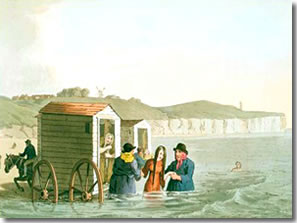
Illustration of a seaside scene. Image courtesy of www.eriding.net
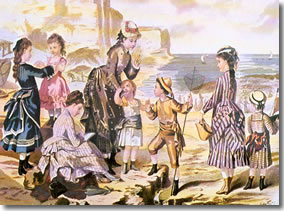
Illustration of a bathing machine. Image courtesy of www.eriding.net. (Click on image to enlarge.)
Day trips and holidays
Holidays and day trips were not accessible to poorer families until the late 19th century. Before that most working families could neither afford it nor did they have time off. This changed when the introduction of cheap fares on the railways made the cost much more affordable and workers started to get more holiday time.
If they went on holiday, working class families travelled by train in crowded and uncomfortable carriages. Whilst at the seaside children may have been treated to a Punch and Judy show or a penny lick ice cream.

Photograph showing a group of Victorians at the seaside. From Durham: The Photographic Collection by Michael Richardson. (Click on image to enlarge.)
Toys and Games
At the beginning of the Victorian period toys and games were made by hand and were very expensive. Poor children would have played with second hand toys or ones made from scrap materials. From the middle of the 19th century factories starting mass producing toys and they became much cheaper to buy.
Popular toys for girls were dolls and dolls houses whilst boys were given model trains and soldiers to play with. Some Victorian toys were also educational and many wealthy children had ‘Sunday toys’. These were religious and could teach them stories from the Bible, one example being Noah’s Ark. Jigsaw puzzles with Biblical scenes were also popular.
All children enjoyed playing outdoors if they had the opportunity and toys such as spinning tops, hoops, marbles and diablo were popular.
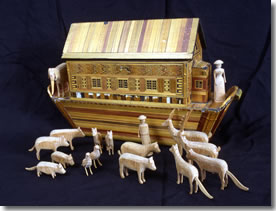
Photograph showing a wooden Noah’s Ark toy, a popular ‘Sunday toy’. Copyright York Museums Trust (York Castle Museum). (Click on image to enlarge.)
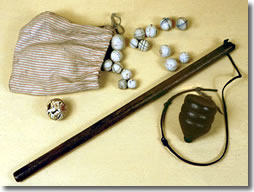
Photograph showing selection of Victorian toys. Image courtesy of www.eriding.net (Click on image to enlarge.)
Museums, Theatre and Sport
Many Victorian adults were interested in history and the surrounding world. The excitement surrounding the Great Exhibition sparked enthusiasm for museum visiting. Popular museum exhibits featured stuffed birds and animals. One Durham resident, Mr Proctor, who lived on Palace Green was listed in the 1861 Census as a bird preserver and many of his specimens ended up in the first University Museum.
Music halls and theatres were a popular form of entertainment and Durham had many theatres. The Assembly Rooms in Durham on North Bailey was converted to a theatre during the Victorian period playing host to travelling productions and pantomimes.
Sporting activities also became popular during the Victorian period. The period witnessed the start of organised spectator sports such as football and rugby. Women could also participate in some sporting activities. In 1874 a new game, Lawn Tennis, was invented and croquet and golf were also popular with women. The Victorians also liked to cycle. Originally this was a pastime for men as long skirts made it difficult for women but changes in fashion and the invention of the ‘safety bicycle’ in 1876 meant cycling was more lady-like and therefore more popular.
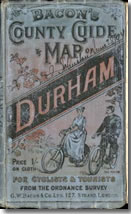
Cover of Bacon’s cycling map of Durham. Image by Jeff Veitch courtesy of Durham Heritage Centre.

Photograph of Henderson’s Wanderers Association Football Club. From Durham: The Photographic Collection by Michael Richardson. (Click on image to enlarge.)